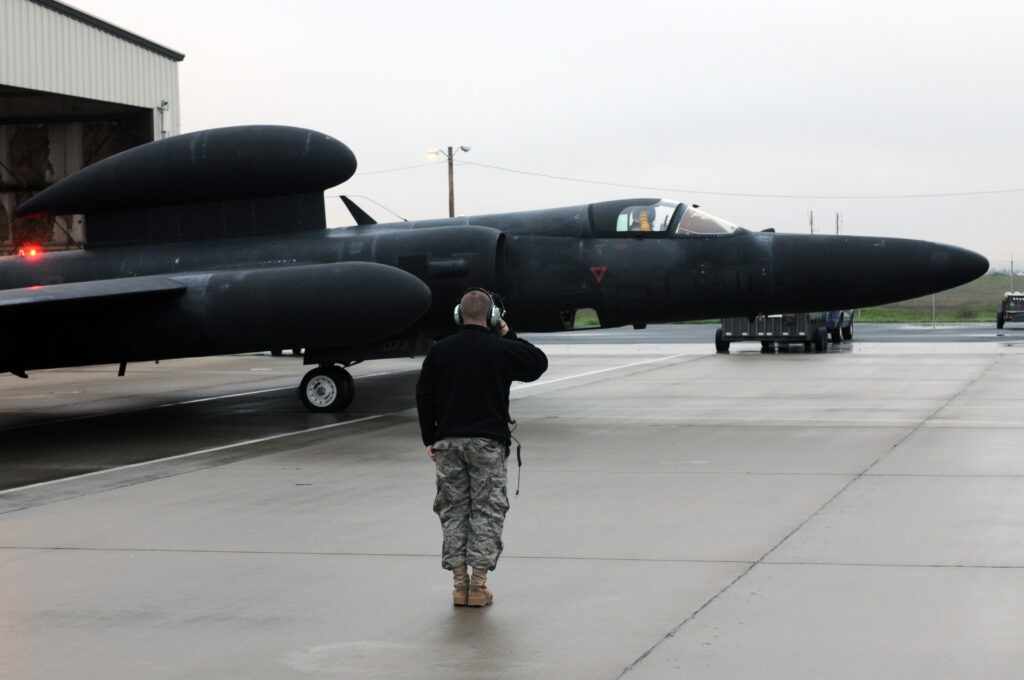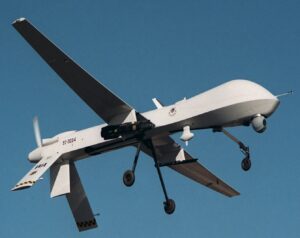By SYDNEY J. FREEDBERG JR.
 CAPITOL HILL CLUB: Under the new National Defense Strategy, the nation must invest in cutting-edge technologies to take on Russia or China in a major war. But even as we do that, we can’t neglect the lower-end, lower-cost systems that gather intelligence everyday in peacetime, a senior Pentagon intel official said. We need to strike a balance between a small number of high-tech, high-cost capabilities and a larger number of more mundane ones, Kevin Sherman told an Army signals intelligence (SIGINT) conference this morning, for three reasons:
CAPITOL HILL CLUB: Under the new National Defense Strategy, the nation must invest in cutting-edge technologies to take on Russia or China in a major war. But even as we do that, we can’t neglect the lower-end, lower-cost systems that gather intelligence everyday in peacetime, a senior Pentagon intel official said. We need to strike a balance between a small number of high-tech, high-cost capabilities and a larger number of more mundane ones, Kevin Sherman told an Army signals intelligence (SIGINT) conference this morning, for three reasons:
We can’t afford enough “exquisite” systems to cover the relentless day-to-day-after-day demand for intelligence, surveillance, and reconnaissance (ISR).
If we use the cutting edge tech for peacetime ISR, we give potential adversaries too many chances to see it in action and prepare countermeasures for wartime.
But if we deploy enough low-end ISR in peacetime, they can collect enough intelligence on those adversaries that we have a better idea of how to fight them if we have to. Building that database is a vital, even if the systems that gather the data for it go down in flames as soon as the shooting starts.
So how do you divide up the dollars? Well, that’s the hard part, said Sherman, who oversees Military Intelligence Program (MIP) resources for the under secretary of defense for intelligence, retired vice-admiral Joseph Kernan.
“Those will be debates we’ll have over the next couple of years, and those are some tough choices,” Sherman told me in an sidebar conversation after his remarks to the conference, which was organized by the leading electronic warfare group, the Association of Old Crows. “Do we reduce some of those capabilities have been very helpful in the CT (counter-terrorism) fight, that a lot of our combatant commandshave relied on, in order to buy more exquisite things? And do we reduce the level of support we provide on a day to day basis? Those are some of the trades that are potentially there.”
NDS Drives Everything (But How Fast?)
Like other Pentagon officials lately, Sherman hammered home that Defense Secretary Jim Mattis’s National Defense Strategy, released in January, forces the whole Defense Department to refocus on “great power competition” from Russia and China.
“I’m not allowed to go out of the Pentagon unless I highlight Sec. Mattis has a plan,” Sherman said. “It’s called our National Defense Strategy.”
And while Mattis travels to war zones and allied nations, Mattis’s deputy, Patrick Shanahan, is back home pounding the National Defense Strategy into people’s heads all over the Pentagon. “Every day…he is asking (someone), ‘how are you implementing the National Defense Strategy? How are you reinvesting to do that?”
Future wars will require decision superiority in a time of fast-paced conflicts across multiple domains. Raytheon exec Rick Yuse outlines 5 advanced technology enablers to gain critical advantage.
“The program review that’s going to start after Labor Day, it’s all going to be about the National Defense Strategy,” Sherman continued. “I’m a budget guy…so I’ll see what turns up in the budget here in a few months.”
“Intel’s a foundational capability” in that strategy, he said. And while intelligence has always been essential, now it’s also increasingly omnipresent.
More than a decade in the making, F-35 Lightning program is transforming air defense for the United States and its strategic partners.
After 17 years of combining drones, planes, satellites, and wireless computer networksagainst an adversary who couldn’t jam or hack our signals — what’s called a “permissive environment” — frontline forces have developed an “incredible” and nigh-insatiable appetite for ISR. Full-motion video (FMV) from drones and datalinks from other high-end intel assets are now present, in some cases, “down at the squad and platoon level,” Sherman said. “They expect information, they expect situational awareness, and they expect to have it in that contested fight — and that’s not a guarantee today.”
If you’re up against the Chinese or Russians instead of the Taliban, drones, manned ISR aircraft, or even satellites may get shot down, their control links may be jammed, or their software may be hacked. Or the data processing and distribution centers may turn into smoking holes in the ground after a few minutes of incoming precision-guided missiles.
So how do you deal with high-end adversaries? Part of the solution is to develop high-tech, high-priced systems that can survive a high-intensity fight, Sherman said, “but one of my concerns is to make sure we don’t go too far in that direction.”
F-16s and F-35 at RAF Lakenheath
Hi-Lo Mix
“The shiny object that everyone looks at is, how do I deliver a platform that survives in that contested environment? (There are) big challenges there, tough debates,” Sherman said. “There are also some very exquisite expensive systems that would be needed to do that.”
“But 99 percent of the time we’ll be working in a more permissive environment,” he went on. That requires large numbers of individually less capable but more affordable systems to keep collecting on every aspect of an adversary’s operations over a wide area and a long period, so we can build a database of his tactics, technologies, strengths, and weaknesses for wartime.
“That’s something I think the Department will struggle with for the next couple of years, is how to get that balance right,” he said.
Predator drone
High-end systems are necessary, but “some of those things are potentially very expensive and we can only have limited numbers,” Sherman told me afterwards. “If I look at what’s supporting the commands today… there’s a volume and a persistence we may not be able to afford if all we have is very exquisite systems.”
Besides, you don’t want to roll out your best stuff in full view of an adversary if something less capable can do the job as well, without giving away the secret sauce. “If you use it too often, you may limit its effectiveness when you need it,” he said.
So alongside a small number of super-systems, the US needs a large force with affordable equipment to do the day-to-day collection. In this version of what the military calls a “high-low mix,” the job of the “low” force is two-fold: to conduct ongoing operations against low-end enemies like insurgents and terrorists, and to gather intelligence against high-end adversaries that can guide preparations for a major war.
That peacetime collection effort is already ramping up, Sherman said. On the electronic warfare executive committee (EW EXCOM) created by former deputy secretary of defense Bob Work, Vice-Chairman of the Joint Chiefs Gen. Paul Selvahas been “challenging the intelligence community” to gather more electromagnetic signatures of adversary systems — the telltale signals from their radios, radars, and so on — to help inform the development of our own systems. The National Security Agency (NSA), infamous for electronic eavesdropping, is investing to “revitalize” the technical aspects of signals intelligence. And the Pentagon is reviewing airborne SIGINT collection (i.e. aircraft that do electronic eavesdropping, like the EC-130 Compass Call) to reorient it from collecting on terrorists and insurgents to great powers.
Rep. Rodney Frelinghuysen
Congress has also been supportive, Sherman said. In particular, Rep. Rodney Frelinghuysen — chairman first of the defense appropriations subcommittee, then of full committee — created “ISR Transfer Funds” to meet urgent operational needs. Starting with $500 million in fiscal year 2016, it rose to $737 million by 2018, which is now being disbursed after a fierce competition among applicants. The fate of this fund beyond the 2019 budget is uncertain, however, Sherman said, because Frelinghuysen will retire this year.
Amidst all this activity, what can industry do to help? The first thing, Sherman said, is to read the National Defense Strategy so both you and your customer can tailor your technology to the strategic need. The second is to simplify highly complex systems so young, dedicated, but overtaxed troops can operate them in the cold or heat, without sleep, and under enemy fire, he said: “Anything you can do to make sure it doesn’t take a PhD to operate your systems would be very helpful.”



No comments:
Post a Comment